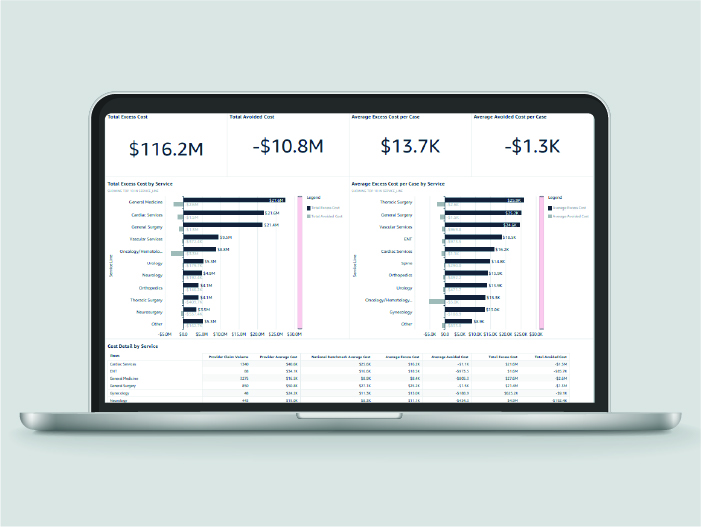Auto logout in seconds.
Continue LogoutWriting for Modern Healthcare, Caroline Hudson outlines five key factors that will impact hospitals' financial performance in 2024.
1. High expenses will persist
According to Hudson, labor costs are still a top concern for many hospitals and health systems as they work to reduce contract labor use and adjust to higher salaries and wages. For example, Kaiser Permanente recently agreed to a 21% pay increase after over 75,000 workers went on strike in October.
Many providers are also struggling with increased supply and pharmaceutical costs. According to Chip Kahn, president and CEO of the Federation of American Hospitals, these higher costs are likely to continue, especially as providers negotiate new vendor contracts.
"For some items that hospitals purchase in large quantities over time, where they've contracted for pricing over time, there could be a ripple effect," Kahn said. "The new price doesn’t hit the hospital until sometime into the future."
2. Patient volumes are generally increasing (but not everywhere)
Over the last year, hospitals and health systems have generally seen improved patient volumes, mostly due to pent-up demand. For example, Cleveland Clinic reported an 8.1% increase in surgeries in the first nine months of 2023, including an 8.5% increase in outpatient procedures, and an 8.3% increase in inpatient admissions.
However, not all hospitals and health systems are seeing the same increases. In Chicago, CommonSpirit Health reported a 5.8% year-over-year decrease in overall outpatient visits, a 1.6% decrease in outpatient surgeries, and a 0.6% decrease in inpatient surgeries during its 2023 fiscal year, which ended June 30.
Separately, Trinity Health noted in its financial report for the first quarter of 2024 that its inpatient volumes may never return to pre-pandemic levels, especially with more procedures moving to outpatient settings.
In addition, "[h]igher volumes can bring in more money, but also add to the total cost of care delivery while putting additional strain on already understaffed departments," Hudson writes.
3. Regulators are increasing scrutiny
Currently, the Federal Trade Commission (FTC) and other regulators are increasing their scrutiny of proposed healthcare mergers.
In November, the FTC blocked John Muir Health's proposed acquisition of San Ramon Regional Medical Center in California, arguing that the deal would lead to higher service costs and reduce incentives for quality care.
According to Mark Pascaris, director of Fitch Ratings, providers may pursue more out-of-market deals in the future to avoid regulatory scrutiny. One of these major cross-markets mergers was Advocate Aurora's $27 billion merger with Atrium Health in 2022, which joined non-overlapping markets in the Midwest and Southwest.
"There's plenty of activity out there, not just [mergers and acquisitions], but of course partnerships, joint ventures, things like that," Pascaris said. "Everyone is talking to everyone else, and we think that will continue to be the case."
4. Operating margins are still relatively weak
According to data from Kaufman Hall, hospitals' year-to-date operating margins stabilized at 1.2% from August to October. However, some hospitals and health systems are still experiencing negative margins, including Providence and CommonSpirit Health.
"The regression line is pointing in the right direction. Now, that said, we still have a ways to go. We're not back to a pre-pandemic level of operating margins," Pascaris said. "Part of the question, not just for 2024 but really long-term beyond that is, will we ever get back?"
5. Expansion will be necessary — but costly
Despite ongoing financial difficulties, many health systems are progressing with large construction projects.
For example, Mayo Clinic in November announced a $5 billion, six-year plan to expand its flagship campus in Rochester, Minnesota. The plan includes five new buildings, including two nine-story clinical buildings and a logistics building for technological innovations, and construction is set to begin early 2024.
Separately, Indiana University Health is currently working on a $4.3 billion expansion project, which includes an 864-bed hospital on a 44-acre medical campus. The hospital is expected to open in downtown Indianapolis in late 2027.
According to Hudson, these expansion projects are necessary for health systems to meet growing patient demand and ensure their long-term success as the healthcare industry continues to evolve. (Hudson, Modern Healthcare, 12/6)
Health systems are under increasing pressure to reduce costs. Over years of studying cost-controlling best practices, Advisory Board has identified 20 essential tactics that can help you create near-term savings and set the stage for long-term cost discipline.
Don't miss out on the latest Advisory Board insights
Create your free account to access 1 resource, including the latest research and webinars.
Want access without creating an account?
You have 1 free members-only resource remaining this month.
1 free members-only resources remaining
1 free members-only resources remaining
You've reached your limit of free insights
Become a member to access all of Advisory Board's resources, events, and experts
Never miss out on the latest innovative health care content tailored to you.
Benefits include:
You've reached your limit of free insights
Become a member to access all of Advisory Board's resources, events, and experts
Never miss out on the latest innovative health care content tailored to you.
Benefits include:
This content is available through your Curated Research partnership with Advisory Board. Click on ‘view this resource’ to read the full piece
Email ask@advisory.com to learn more
Click on ‘Become a Member’ to learn about the benefits of a Full-Access partnership with Advisory Board
Never miss out on the latest innovative health care content tailored to you.
Benefits Include:
This is for members only. Learn more.
Click on ‘Become a Member’ to learn about the benefits of a Full-Access partnership with Advisory Board
Never miss out on the latest innovative health care content tailored to you.


